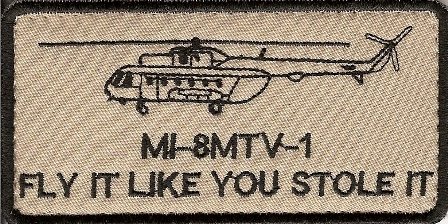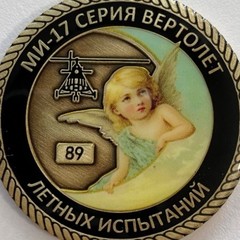-
Posts
3447 -
Joined
-
Last visited
-
Days Won
4
Content Type
Profiles
Forums
Events
Posts posted by AlphaOneSix
-
-
Your Inverter switch is normally set to AUTO. Since the switch is in the AUTO position by default, most people overlook it. In AUTO, the inverter comes on to provide some (not all) AC-powered systems with AC power. (As mentioned previously, the inverter takes DC power as an input, and outputs AC power). You will notice that during startup, before your AC generators are online, the INVERTER ON light is lit. Once your AC generators are online, the inverter shuts off automatically (it's in the AUTO position, remember?) and all AC power is provided by the AC generators. When your rotor RPM drops too low, your AC generators will automatically drop offline (they also come back online automatically once rotor RPM increases). When your AC generators drop offline, your inverter comes on again automatically (assuming the inverter switch is in AUTO and not OFF) and provides some of your AC-powered systems with AC power. I don't remember which systems off the top of my head, but I know that you don't get your 200 volt power, only 115 volt. So anything powered by 115VAC will continue to work on battery power through the inverter, while anything that requires 200VAC will stop working. Also, anything powered by 28VDC will also continue to work, at least until your batteries die (which I can't remember if that's modeled or not).
-
During extended descents, it is possible to overspeed the rotors (noting that this does not necessarily have anything to do with them colliding with each other). That's why there is a switch on the collective to lower the RPM of the rotor.
“ОБОРОТЫ” Control selector for re-adjustment of the free-turbine (rotors) RPM governor. To low [NUMPAD - + RALT] and to nominal [NUMPAD + + RALT].It's normally set to nominal, but during long descents you should switch it to low to help avoid rotor overspeeds. At the end of your descent, switch it back to nominal.
It also goes without saying that unless you have an engine failure or a governor failure, you should never move the throttles from the AUTO position during flight, ever.
-
While I'm at it, I did a search for the AH-64a Block 49a. I can't find a thing on it. Anyone got a handle on this one?
The "-49A" really just refers to the version of the fire control computer on the aircraft. For example:
Some AH-64A helicopters have the 7-319200005-11 Fire Control Computer (FCC) with –51 software installed (EGI Mod); others have the 7-319200005-9A Fire Control Computer (FCC) with –49A software installed; others yet have the 7-319200005-5 FCC with –45 software. Because of differences in operation' date=' displays, etc. designator symbols -45, -49A, and -51 will indicate material peculiar to that software installation.[/quote'] -
Tried to "rep" you AOS, but I already did recently, so I can't right now.
BTW, speaking of rep, I wonder if mine is working right. My control panel shows that six people have given me positive reps (and another one shows as grey), however my rep displays as 1. Am I missing something?
I have no clue how the reputation system works. I have "1166 points total", but I have no idea what that means. I've certainly had more than 15 people give me rep, though (for which I'm very thankful!).
-
 2
2
-
-
You can't specifically get "English only" searches, but you can exclude the Russian-language forums from your search. it's kind of a pain, but here is the link (for the "New Posts" button, anyway):
-
ABRIS and autopilot have nothing to do with each other:
In this chapter we will discuss the use of a flight route via the PVI-800 navigation control panel. This assumes that a flight route has first been created in the Mission Editor (ME). Keep in mind that the PVI-800 flight and navigation system can only operate with up to six pre-loaded waypoints (WP) from the ME or created when in the cockpit. Therefore, when using the autopilot route mode, you should consider this limit when placing WPs in the ME for the mission. Routes created in the ABRIS cannot be used by the PVI-800 navigation system for automatic route flight. The PVI-800 and ABRIS navigation systems are not linked! -
Good luck on your oral and practical tests. I am sure you will find them incredibly easy. When I got my A&P, it was based on experience, and I had no real classroom training, so I was very nervous. As it turned out, it was actually quite simple. I'm sure you'll do well, just keep up the studying, and remember, once you've got your A&P, it never expires, so you never have to take any tests again! (Until you go back for your IA, that is.)
-
Good work:) And how about Mi-17? He is the same as Mi-8,but only with wings for arms.
The model being depicted is the Mi-8MT, which is identical (except for the name) to the Mi-17. The only diffierence between the Mi-8MT and the Mi-17 is that the Mi-8MT designation refers to aircraft made for the Russian military (and the militaries of Russian allies). The civil version offered for export was labeled the Mi-17. All versions of the Mi-8/17 can be fitted with outriggers for external stores.
-
I do, I use the first detent to fire the cannon, and the second detent to release weapons.
-
Oh yes, you can absolutely change the focus, but it's not something you could (or should) do while flying. It's just like using binoculars, you have to twist the focus ring on each tube.
-
Do you mean that as a specific issue with the NVG's? I've never tried any NVG's IRL so I've no clue about how they're made with regards to that.
Your eyes change focus automatically, and very quickly, when you change what you're looking at. Goggles can't do that, you set the focus manually. When you're flying with goggles, you set the focal point out to inifinity, which results in everything from about 20 feet on out being in focus. But as you come closer, everything gradually falls out of focus. By the time you get into the cockpit, everything through the goggles would be terribly out of focus. You would be able to tell that you were looking at a gauge, for example, but you wouldn't be able to see the indicator or any of the numbers. In order to read the cockpit instruments, you look "under" the goggles. What this means is that you keep your head up like you're still looking outside, but you look down with your eyes, so that you are not looking at the instruments through your goggles.
-
The 30mm from the AH-64 (M230 gun) has a much lower muzzle velocity (760 m/s) than the 30mm rounds for the 2A42 (960 m/s) or the GAU-8 (990 m/s).
Similarly, the M230 fires a much lighter round (235 grams) compared to either the 2A42 (389 grams) or the GAU-8 (425 grams), so it runs out of energy much faster.
Because of this, it's not very helpful to compare the 30mm of the Ka-50 to the AH-64 in terms of penetration, the 2A42 on the Ka-50 clearly packs more of a punch.
-
ABRIS viewable through the goggles.
This is the only issue I actually have the the NVG's in the game. Focal point. You should not be able to clearly see anything in the cockpit, regardless of light level. When flying, your focal point is near infinity, so anything within about 5 feet is fuzzy and blurry. You certainly would not be able to read anything in the cockpit through the goggles. But I live with it, since I'm sure it would be a real pain to try to implement in the game.
-
I don't use it as shift at all. I use it for the brakes.
-
I already mentioned this in your other thread, but the OVN-1 is second generation and that the AN/AVS-9 is about two times better at light amplification than the OVN-1.
Not sure if you are old enough to have flown with AN/PVS-5, but those were horrible and are about the same performance of the OVN-1 (According to my research, anyway, I must admit that I've never used the OVN-1 goggles).
A better wish list item would be to improve the NVG's in general. As it currently stands, I don't think differences in ambient light affect the goggles as much as they should, and the focal point is not modeled correctly for sure, but for the most part I do think they are modeled well (better than any other game on the market).
-
I use AN/AVS-9 as well, and the OVN-1 really doesn't compare. OVN-1 goggles would be considered 2nd generation. AN/AVS-9 have roughly two times better light magnification than the OVN-1.
That being said, it is probably still a bit too dark out when the moon is up. I'm not sure the game takes ambient light into consideration for the goggles. Still, it's the best NVG representation in a video game yet, so we're getting there.
-
The APU on the Ka-50 only has a starter, and no generator. It provides bleed air for engine start, and can also provide bleed air for the turbo gear for maintenance-related tasks.
Air for anti-ice is bled from the secondary air in the combustion chamber, and is not fed through any kind of conditioner, as it comes out of the combustion chamber at around 300 degrees and is fed directly to the valve that supplies bleed air for both anti-ice as well as the operation of the dust protectors.
-
 1
1
-
-
What do you mean by "enable" trim? Trim is always enabled and cannot be turned off.
-
The bleed air from the APU only connects to the air starters on the engines. There is no way for it to be used for anti-ice.
-
990
-
Emergency power is only used in the event of an engine failure. If you need emergency power just to take off, you need to drop some weight.
-
Here are the 4 detent positions of the throttles, from top to bottom:
FULL (Emergency)
AUTO
Engine limit governor failure (MEDIUM)
IDLE
-
Here you go!
-
As far as the game is concerned, once a vehicle is destroyed it no longer exists. There is a wishlist item to keep them around as static objects that can be targeted and attacked again. Whether something like that is ever implemented is anyone's guess at the moment.



Ka50 gearbox and airfoil
in DCS: Ka-50 Black Shark
Posted
The schematic above is for the Ka-32, which is very similar but has a different gearbox than the Ka-50. It has been mentioned on this forum before, but I can't quite remember, but I think the nominal rotor RPM was 304 RPM.